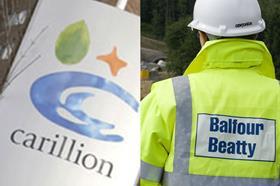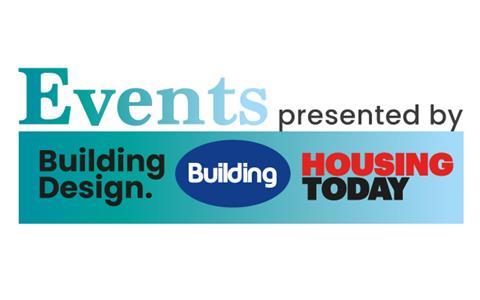Balfour Beatty says Carillionās calculation that a merger between the two firms could create Ā£1.5bn of added value is āincorrectā

Balfour Beatty has said Carillionās calculation that a merger between the two contracting giants could create Ā£1.5bn of added value, a key part of Carillionās attempts to woo Balfourās investors, is āincorrectā and is unlikely to be achieved.
This morning Carillion set out its detailed plans for a merged business combining the two firms which included Ā£175m of annual cost savings, which, when capitalised, would add Ā£1.5bn to the value of the company combined entity.
Carillion said that should the merger go ahead, it would also seek to downscale Balfour Beattyās UK construction business along the lines of its own construction business, which reduced in size by a third in the last three years, and refocus on support services.
Carillionās move this morning was designed to tempt Balfour Beatty share holders and force Balfourās management back to the negotiating table after two of its merger offers have been rejected.
But in response, Balfour Beatty said this morning that Carillionās announcement still ādid not address significant risksā that it set out when it rejected Carillionās second merger proposal on 11 August.
It said: āTo benchmark a series of theoretical cost reduction opportunities, represent them all as synergies, and further, to represent them as incremental value creation directly arising from the merger proposal is incorrect.ā
Balfour Beatty said it had āserious reservations as to the achievability of the stated synergy numberā and that it came with āunacceptable operational and financial risksā.
It added that Carillionās business plan had āseveral key assumptionsā that āsuggest an analysis based on the integration of businesses smaller than Carillionās, rather than one that is substantially largerā.
It added: āIn particular, the substantial rescaling - possibly by up to two thirds - in the revenue of Balfour Beattyās UK construction business would eliminate future earnings recovery potential. It would also incur cash outflows of many hundreds of millions of pounds of restructuring costs and working capital.ā
Repeating one of its criticisms of Carillionās plans that it made on Monday, it said Carillion had not provided āany strategic or value related logicā for the retention of Balfour Beattyās consultancy arm Parsons Brinckerhoff, which it is in the process of selling.
It added: āBalfour Beatty has been clear that Parsons Brinckerhoff has not provided synergistic benefits for the group over five years of ownership, and this has not been disputed by Carillion.
āTheir proposed approach would result in the likely termination of the Parsons Brinckerhoff sales process.
āThis risks damage to that business, as well as eroding its competitive position, and potentially resulting in a loss of value to our shareholders.ā
It said the board of Balfour Beatty was āconfident that pursuing its strong independent strategy based around a recovering UK business, growing US market and significant investments businessā was a more attractive option for restoring value to its shareholders.
The Cityās verdict: The deal āshouldā happen

Joe Brent, analyst of Liberum, said that āegos asideā the Carillion and Balfour Beatty merger ādeal should happenā because the āsynergy prize is too big to walk away fromā.
He said he thought synergies could be higher than the Ā£175m Carillion says it is confident of achieving. āOur view is that synergies could be higher than this - perhaps Ā£250m - making the economics of a deal difficult to ignore,ā he said.
He added: āHistoric deals would suggest that Carillion typically starts with an initial synergy target of circa 60% of their final objective, which would imply potential synergies of Ā£290m.
Olivia Peters, analyst at the Royal Bank of Canada, said the strategy Carillion outlined for a combined business with Balfour Beatty āseemed sensibleā and that the figure for savings from synergies between the two firms was āmuch higher than expectedā.
Andrew Gibb, analyst at Investec, said Carillionās continued desire to retain Parsons Brinckerhoff ā which Balfour is in the process of selling āwas telling.
He said: āWe donāt see Parsons as being in the long-term plans for Carillion. However, it strikes us that the need to retain this business in the short term reflects the groupās view on the current state of Balfour Beattyās construction division and the scale of the task ahead to implement a turnaround.
āThe question for investors now is who is best placed to action this?ā
Stephen Rawlinson, analyst at Whitman Howard, said: āOur sense is that the [merger] talks had been moving along quite nicely until Carillion realised that the cashflows from Parsons would be needed to fund the debt of the combined entity and possibly that strategically Parsons makes great sense in some territories as part of an integrated offering.
āOur view is that the level of potential savings could be much higher than indicated and the cost of achieving them much lower but Carillion is being cautious.
Rawlinson said the amount to be saved on an annual basis would be around 50% of the current level of underlying operating profit of the two companies.
Carillion has just reported Ā£97m operating profit in the first half of 2014 and Balfour Beatty has promised around Ā£150m of operating profit for 2014.
āWe believe that such savings are credible and could be exceeded and are unlikely to be achieved without the two companies coming together,ā he said.
āThe opportunity to combine with Balfour Beatty has been on the agenda for some time in Carillionās strategy discussions and the timing seems now to be right to move ahead.
āBalfour Beatty on its own seems to have had the chance to get its house in order in the recession but has not succeeded.
āSavings of the levels described are something that Balfour Beatty shareholders cannot ignore as the prospect of another six months without a viable CEO, the debt position worsening and possibly jeopardising operations, and the sale of possibly the best business in the portfolio is not attractive.
ā[A] merger with Carillion is not risk free but provides a break with the recent inglorious performance and has no greater risk than going it alone but a much higher level of reward.ā























No comments yet